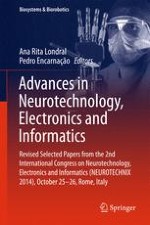2016 | OriginalPaper | Chapter
Post-stroke Robotic Upper-Limb Telerehabilitation Using Serious Games to Increase Patient Motivation: First Results from ArmAssist System Clinical Trial
Authors : Cristina Rodríguez-de-Pablo, Maša Popović, Andrej Savić, Joel C. Perry, Aitor Belloso, Tijana Dimkić Tomić, Thierry Keller
Published in: Advances in Neurotechnology, Electronics and Informatics
Publisher: Springer International Publishing
Activate our intelligent search to find suitable subject content or patents.
Select sections of text to find matching patents with Artificial Intelligence. powered by
Select sections of text to find additional relevant content using AI-assisted search. powered by
